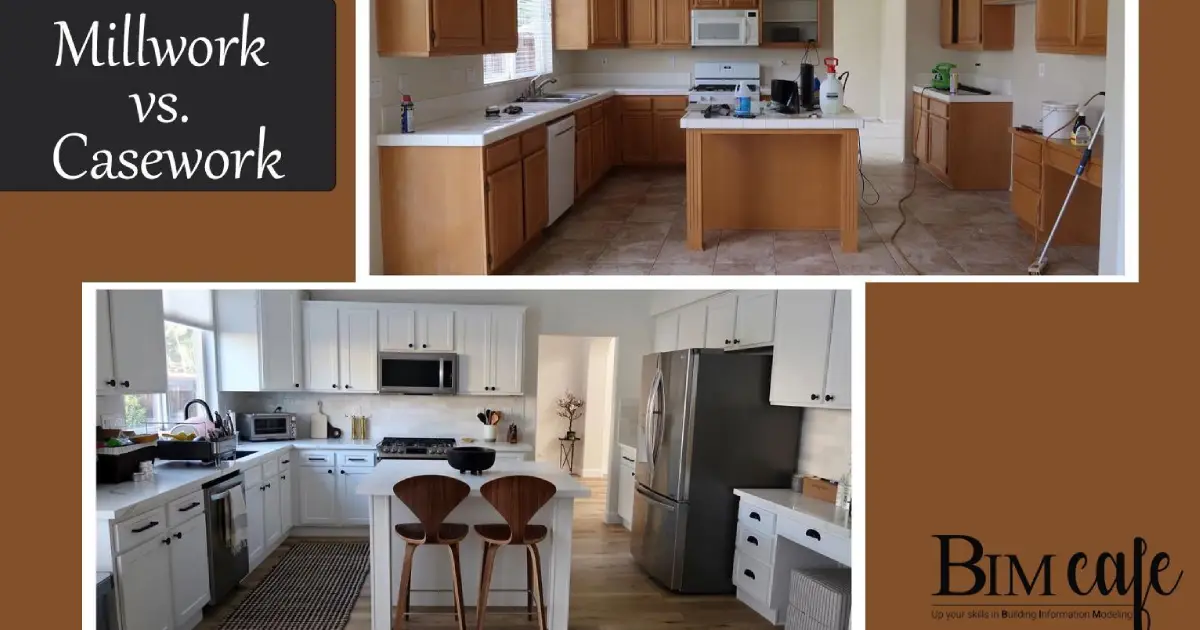
Author: Devika R
February 15, 2024
3 min read
In the realm of interior design and construction, two terms frequently come up: millwork and casework. While they both involve the crafting of wooden elements within a space, they serve distinct purposes and offer unique advantages. Understanding the differences between millwork and casework is essential for architects, designers, and homeowners alike, as it can significantly impact the functionality, aesthetics, and overall feel of a space.
What is Millwork?

Millwork refers to custom-made wooden components that are crafted in a mill or woodworking shop. These components are typically built to fit specific dimensions and design requirements, tailored to the unique needs of a particular space. Millwork encompasses a wide range of items, including doors, windows, moldings, paneling, trim, and built-in cabinetry.
One of the defining characteristics of millwork is its high level of customization. Millwork pieces are crafted to exact specifications, allowing for seamless integration into the architectural design of a space. This level of customization also offers flexibility in terms of design, allowing for intricate details, ornate carvings, and unique finishes to be incorporated into the final product.
What is Casework?

Casework, on the other hand, refers to pre-fabricated or modular wooden cabinets and storage units. Unlike millwork, which is custom-made, casework is typically mass-produced in a factory or workshop using standardized dimensions and designs. Casework includes items such as kitchen cabinets, bathroom vanities, storage cabinets, and shelving units.
Casework offers several advantages over millwork, including cost-effectiveness, speed of installation, and consistency in quality. Because casework is produced in bulk, it can be manufactured more efficiently and at a lower cost compared to custom millwork. Additionally, the standardized nature of casework means that installation is often quicker and more straightforward, saving both time and labor costs.
Key Differences and Considerations
While both millwork and casework involve the use of wood in interior design and construction, there are some key differences to consider:
- Customization: Millwork offers a higher level of customization, allowing for tailored solutions that meet specific design requirements. Casework, on the other hand, is more standardized and may have limited options for customization.
- Quality and Craftsmanship: Millwork is often associated with superior quality and craftsmanship, as each piece is individually crafted by skilled artisans. Casework, while still of good quality, may not offer the same level of attention to detail or craftsmanship.
- Cost: Casework is generally more cost-effective than millwork, making it a popular choice for projects with budget constraints. However, the higher cost of millwork may be justified by its unique design features and superior quality.
- Lead Time: Because millwork is custom-made, it typically has a longer lead time compared to casework, which can be mass-produced and readily available for installation.
Conclusion
In summary, millwork and casework both play important roles in interior design and construction, offering unique advantages and considerations. While millwork allows for custom-made, high-quality wooden components tailored to specific design requirements, casework offers cost-effective, standardized solutions that are readily available for installation. By understanding the differences between millwork and casework, architects, designers, and homeowners can make informed decisions that best suit their project needs and budget constraints.





